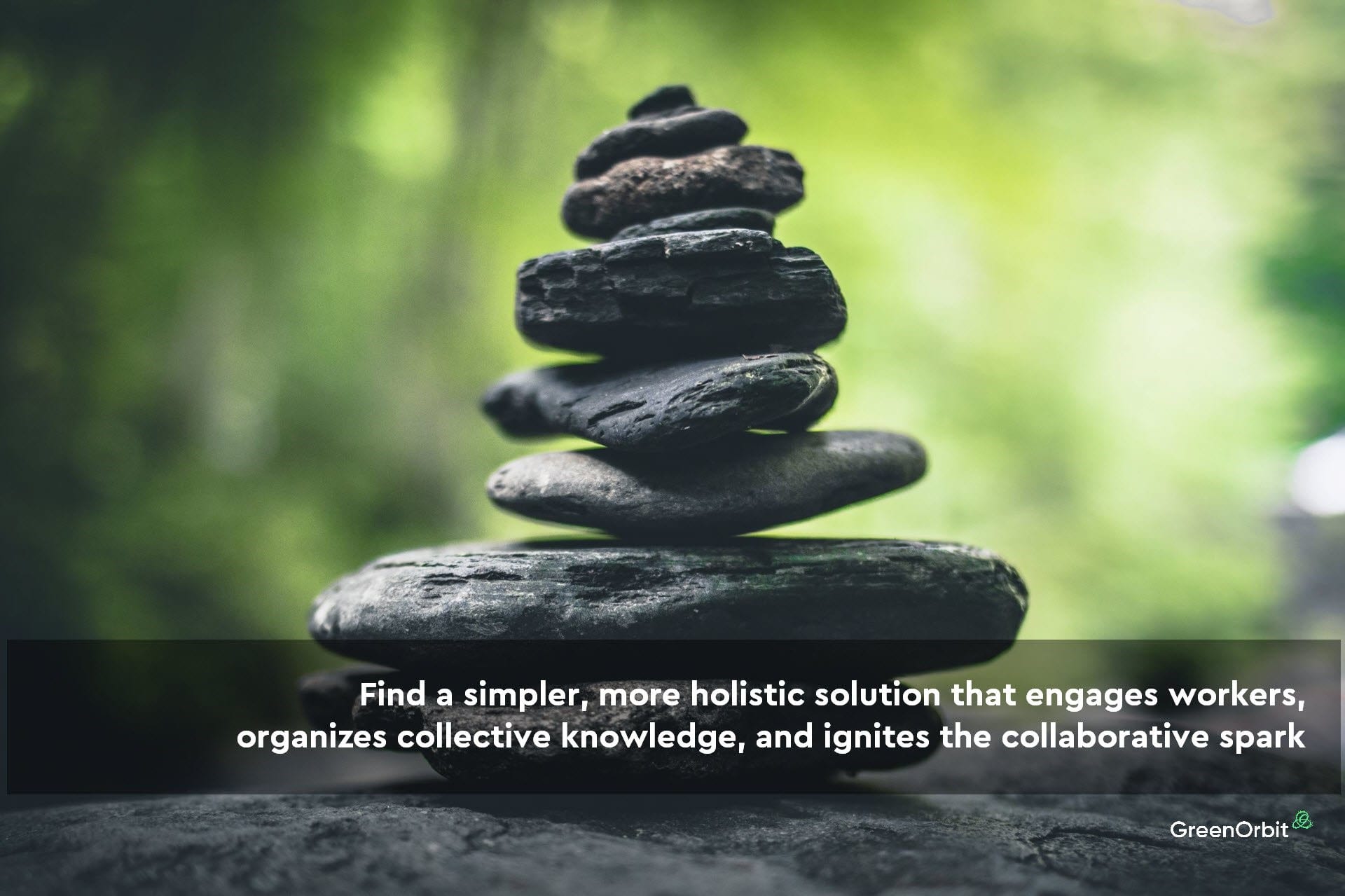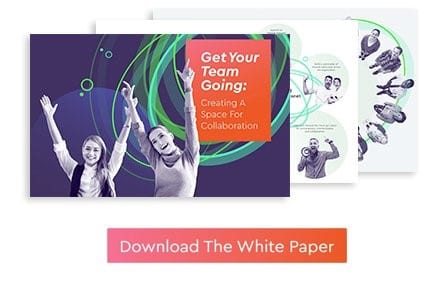The 5 enemies of effective workplace collaboration
Our blog this week comes from GreenOrbit’s Kath McNiff. GreenOrbit is an Innovation Spotlight sponsor in our forthcoming Digital Workplace 24 – a unique digital workplace online event, broadcasting from around the world over 24 hours.
Collaboration is king in the new world of work.
Disruptors like Uber and Airbnb and have shown that small teams of diverse thinkers are capable of toppling industries and building breakthrough products that change the world.
With the #futureofwork on our doorstep, collaboration has become more important than ever – it’s the secret sauce of innovation and is vital for business survival and success.
As Jason Fox (wizard rogue and author of How to Lead Quest) says:
“To find futures, we need to venture into the angst of uncertainty and systematically and collectively use our imagination to explore what’s possible.”
But collaborating (especially amidst uncertainty) is not as easy as it sounds and organizations can struggle to get it right.
For specific ideas on creating a space for collaboration, you might want to check out GreenOrbit’s White Paper:
For now, let’s review a few of the barriers that get in the way of collaboration and look at ways of jumping them.
Lack of training
Businesses build break-out rooms and setup team messaging tools in the hope that collaboration will just happen.
But like any other skill, collaboration requires training – tailored to a company’s unique challenges and goals.
To collaborate effectively, teams need to understand how to
- Actively listen
- Have challenging conversations
- Use collaboration tools
- Develop effective partnerships
- Manage accountability
HR leaders can build a truly collaborative workplace by helping people to understand the art (and science) of collaboration – including how it plays into everyday processes and broader business goals.

Those damn Silos
A recent survey from My Customer.com, reveals that 40 percent of employees feel unsupported by their colleagues because “different departments have their own agendas.”
When departments hoard information and focus on their own goals, the business at large misses out on the convergence of perspectives and potential improvements that a more collaborative approach would provide.
In her book The Innovation Formula, Dr. Amantha Imber shares a funny yet telling anecdote about a lingerie company where “bras didn’t talk to panties” – two ridiculously siloed departments that led to mismatched underwear and significant customer frustration.
One of the problems is that different departments tend to favor different tools and processes – so getting on the same page in a digital sense can prove difficult. This is where a central platform for communication, cooperation, and coordination can help to break down the silos and bridge the information gaps – and voila, matching undies!
Senior leaders need to bring departments together regularly – to set complementary agendas, share challenges and reap the benefits of cross-pollination.

Fragmented Tools
Collaboration tools are hot right now – and they’ll stay hot according to a recent report via Computer World.
“…collaboration software has become an increasingly integral part of how work is both organized and carried out”.
But the sheer volume of disparate tools can defeat the very purpose they’re intended to serve.
Email, Skype, Slack, comments in Word docs and PDFs – with so many conversations going on all over the place, it can be hard to keep track of collaborative efforts.
The proliferation of collaboration platforms shows no signs of slowing down so the challenge will be to consolidate and find a simpler, more holistic solution – one that engages workers, organizes collective knowledge and ignites the collaborative spark – or as the recent research from Deloitte suggests:
“HR organizations must work with IT to bring their expertise in team management, goal-setting, and employee development to help make using the new wave of connectivity tools productive, simple, and engaging.”

The ‘T’ Word
According to PWC’s Global CEO Survey, 50% of CEOs worldwide consider a lack of trust to be a major threat to their organizational growth.
Trust is at the heart of every great collaboration – it starts at the top of an organization and filters down.
It practical terms, it means that people can depend on each other to:
- Follow through and do what they say they will do
- Put skin in the game (share the risks and rewards)
- Acknowledge good work
- Compromise where needed
- Show vulnerability
- Empathize
- Share opinions without fear of ridicule, reprisal or idea-theft
- Overcome personal biases and default ways of thinking
Research has shown that people working in trust-based cultures are 60% more likely to enjoy their jobs and 70% more aligned with their companies’ purpose – the perfect storm for collaboration and innovation.

The Other ‘T’ Word
Collaboration? Who’s got time for that?
Time is precious and there’s so much work to do. Dr Jason Fox calls this relentless busyness “the curse of efficiency” and goes on to explain how it crowds out time for collaboration, innovation, and good strategic development.
Operational efficiency is crucial to business success but it doesn’t drive change or push the boundaries.
So, why do we continue to focus on it? Because we’re good at it, because it feels comfortable and because it’s less frightening than tackling the big problems or seeking new horizons.
Organizations can free up time for collaboration by automating the busy work – using their intranet for online forms, workflows and tick-the-box compliance requirements.
To carve out time for intentional collaboration (instead of just hoping it will happen in an ad-hoc or serendipitous way) organizations can set particular days of the week as ‘Collaboration Days’ – where people plan to be in the office for team meetings and brainstorming sessions.
Or, like Atlassian, they could run regular ShipIt Days where teams can drop what they’re doing and collaborate to “make something awesome.”
Get Collaboration Going
From building an International Space Station to mapping the Human Genome or composing Hey Jude – collaboration is key to our greatest leaps forward.
The same is true for your business.
For a deeper dive into the challenges of collaboration and how your intranet can help, download GreenOrbit’s White Paper.
This blog was originally posted on GreenOrbit’s website.
Categorised in: DWG24


